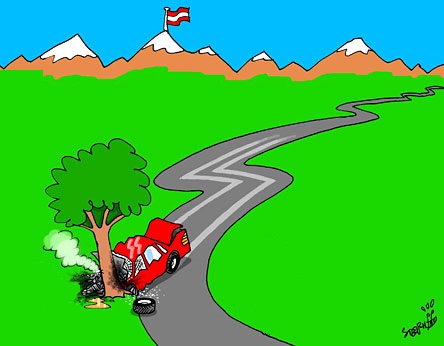Physics Notes - Herong's Tutorial Notes - v3.24, by Herong Yang
Newton's First Law of Motion
This section introduces Newton's First Law of Motion - If the net force acting on an object is zero, then the velocity of the object is constant.
Newton's First Law of Motion - If the net force acting on an object is zero, then the velocity of the object is constant.
Newton's first law of motion can also be stated as: An object at rest stays at rest and an object in motion stays in motion with the same speed and in the same direction unless acted upon by an unbalanced force.
If a running car lost control on a curved road, it will continue to run in straight line until an external object like a tree to apply an unbalanced force on it.

Newton's first law of motion is also called the "Law of Inertia", which can be stated as: Every object has a property called "inertia" that gives the object a tendency to keep its current state of motion.
Table of Contents
Introduction of Frame of Reference
Falling Ball in Earth Frame of Reference
Falling Ball in Elevator Frame of Reference
Introduction of Special Relativity
Time Dilation in Special Relativity
Length Contraction in Special Relativity
The Relativity of Simultaneity
Minkowski Spacetime and Diagrams
Introduction of Generalized Coordinates